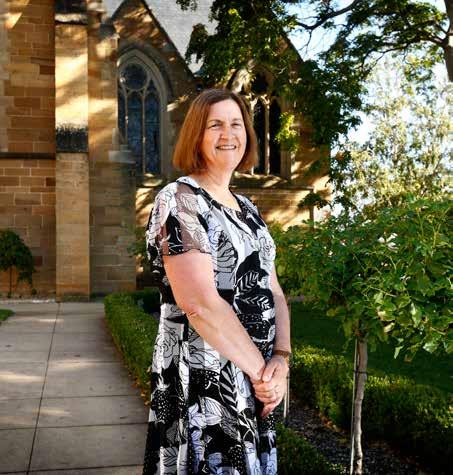
2 minute read
Pedagogy report
Silver lining for learning
PEDAGOGY
This year has been like no other for students and teachers. Learning from home and social distancing requirements created an enormous challenge for educators across our nation, which was then amplified by schools and education being the focus for daily political debate. The response to COVID-19 from the St Mary’s College community, however, reinforces why our College is an outstanding educational institution. During a time of considerable stress and insecurity, St Mary’s staff have maintained learning for our students at home while changing workplace practices to create a safe environment for those at school.
During the final weeks of first term, teachers spent many hours on top of their regular teaching duties undertaking professional learning to plan age-appropriate remote or online learning. In lower Junior School, our existing digital learning platform, Seesaw, was combined with other digital resources to deliver online lessons that even included recordings of teachers demonstrating tasks and online reading activities. As younger students are not fully independent learners, these packages were designed for parents to support learning at home. Upper Junior School and Senior School teachers combined multiple digital platforms such as SEQTA, Microsoft Teams, OneNote and Maths Pathway to deliver a flexible approach to remote learning. Throughout the COVID-19 response, teachers have been outstanding in their ability to manage increased workloads and the fundamental changes in how they deliver lessons. The digital communication platform, Microsoft Teams, has been an invaluable element of online lesson delivery, enabling teachers to
Teachers have been outstanding in their ability to manage fundamental changes in how they deliver lessons.
provide live or recorded lessons. When online, students interacted with their teacher, asked questions in real-time, shared ideas with their class and received instruction on key knowledge and skills. For our Year 11 and 12 students especially, having a teacher available to explain important concepts was critical during this challenging time. Most leading academics in education believe that teacher clarity and wellmanaged explicit instruction remain vital cogs in education, with the use of digital technologies providing a means for teachers to actually teach their students.
However, remote learning also highlighted to teachers and students the limitations of digital learning. We are social beings and positive teacher-student relationships are a cornerstone of education. As educators, being able to observe students as they struggle with learning, intervene where appropriate and build their trust and resilience to take risks with their learning is a social activity that is best done in a physical classroom rather than a remote online environment. Schools provide much more than academic learning. During this period of social isolation, the value to our students and school community of pastoral, sporting and cultural activities, or just being with friends, has never been clearer. In recent years, some ‘futurists’ have suggested that physical schools may disappear as the digital world grows. One silver lining from COVID-19 may be a reminder of the interpersonal nature of learning and teaching and the vital role that schools play in educating the whole child.
Simon Eade Director of Pedagogy
This page: Year 4 teacher Nicky Wakefield delivers a class online.










